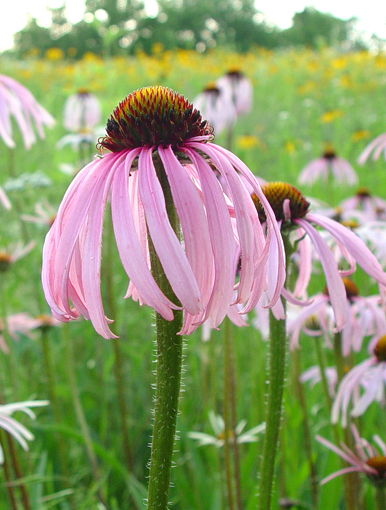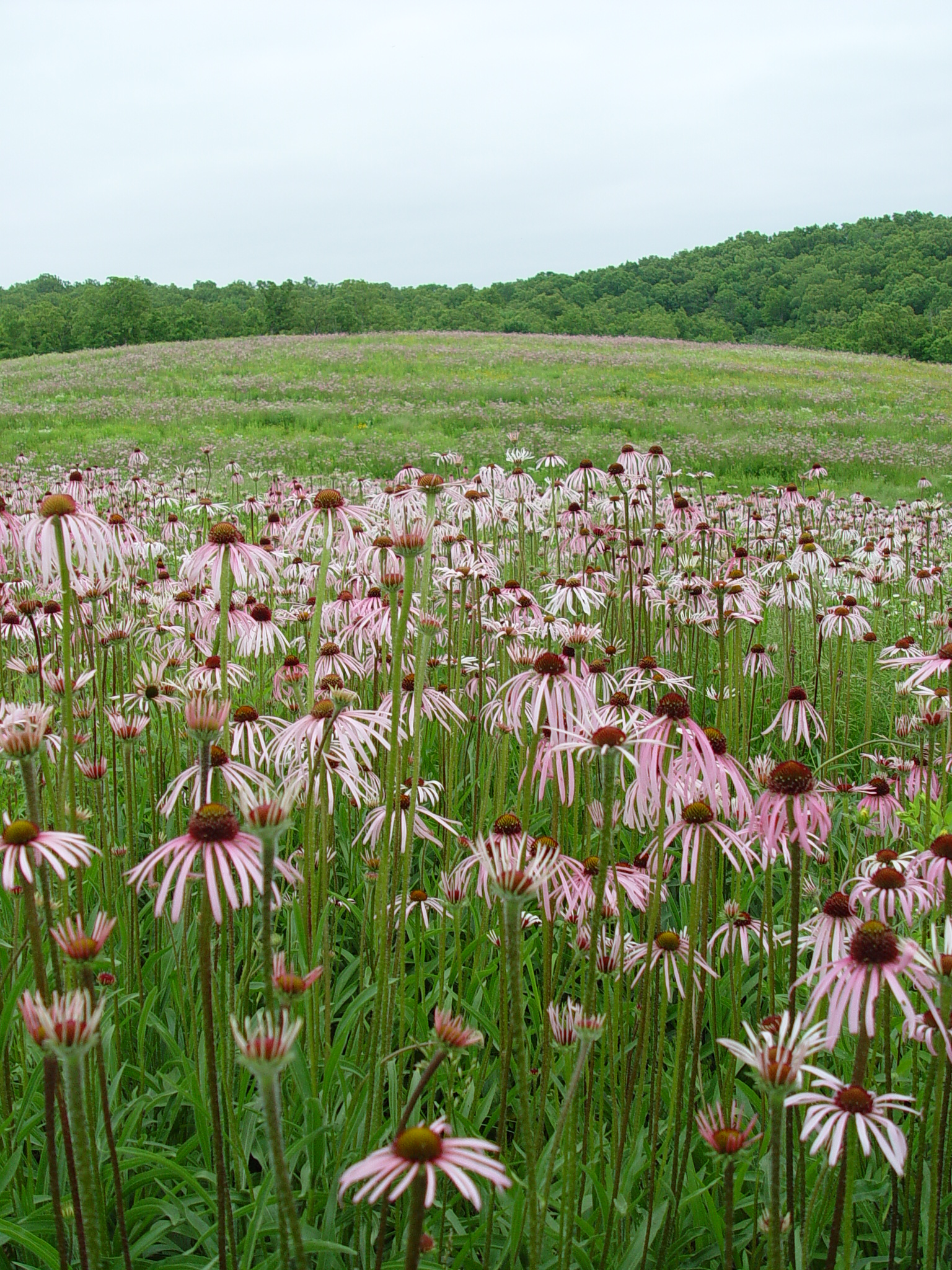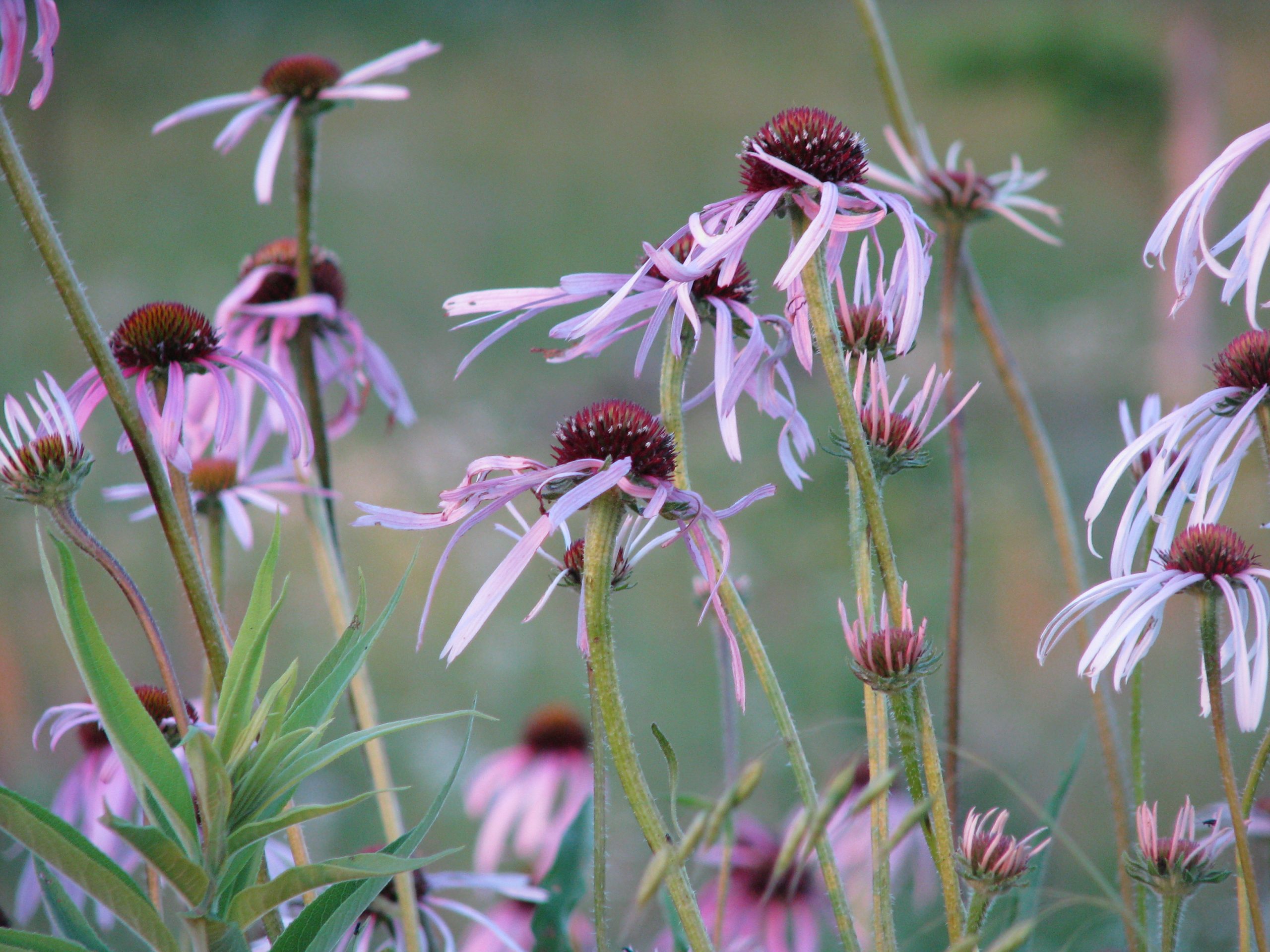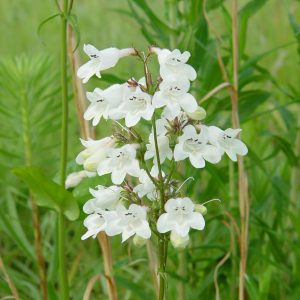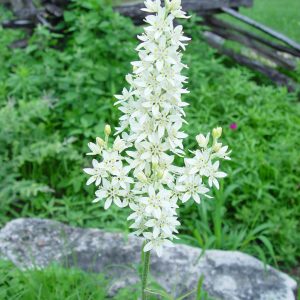Pale Purple Coneflower
Echinacea pallida
Emblem of the prairie; a primary pollen source for coneflower bee (Andrena helianthiformis)
$3.00 – $58.00
For quantity discount pricing, request a quote.
Description
Echinacea pallida, commonly known as pale purple coneflower, is a native perennial forb (wildflower) of prairies, savannas, glades and open dry rocky woods.
Wildlife notes
Long-tongued bees, butterflies, and skippers are the most important visitors to the flowers. Among the long-tongued bees, are such visitors as bumblebees, Nomadine cuckoo bees, large carpenter bees, and leaf-cutting bees. Short-tongued green metallic bees and other Halictine bees also visit the flowers occasionally. The caterpillars of the butterfly Chlosyne nycteis (Silvery Checkerspot) feed on the foliage, while caterpillars of the moths Synchlora aerata (Wavy-Lined Emerald) and Eupithecia miserulata (Common Eupithecia) feed on the flowerheads. Goldfinches occasionally eat the seeds. Mammalian herbivores, particularly livestock,may eat this plant occasionally, but it is not a preferred food source.
Forage notes
Livestock find this plant quite palatable during the growing season.
Landscaping notes
Easily grown in average, dry to medium, well-drained soil in full sun to part shade. Best in full sun. An adaptable plant that is tolerant of drought, heat, humidity and poor soils. Divide clumps when they become overcrowded (about every 4 years). Plants usually rebloom without deadheading, however prompt removal of spent flowers improves general appearance. Freely self-seeds if at least some of the seed heads are left in place. Mass in the border, native plant garden, naturalized area, prairie, wildflower meadow or part shade areas of woodland garden. Good fresh cut or dried flower.
Restoration notes
Habitats include mesic to dry black soil prairies, openings in dry rocky woods, Oak savannas, limestone glades, abandoned fields, and open areas along railroads. It is possible that this plant occurred in gravel or dolomite prairies before these habitats were largely destroyed by development.
This species is commonly used in the following mixes: Shadows & Sunbeams Mix, Wildlife Chuckwagon Mix, Dry’n Rocky Mix, Butterfly & Hummingbird Mix, Prairie Patchwork Mix
Additional information
| Weight | N/A |
|---|---|
| Unit | Packet, Ounces, Pounds |
| Light | Full Sun to Part Shade |
| Seeding Rate | 14 bulk lbs/acre |
| Soils | Dry, Average |
| Height | 24"-30" |
| Bloom Month | May, Jun |
| Color | Purple |
| Specialty Uses | Butterfly, Landscaping, Cut Flower, Medicinal |
| Cattle Palatability | Good |
| # seeds/pkt | 200 |
| Packet coverage area | 5 sq. ft |
